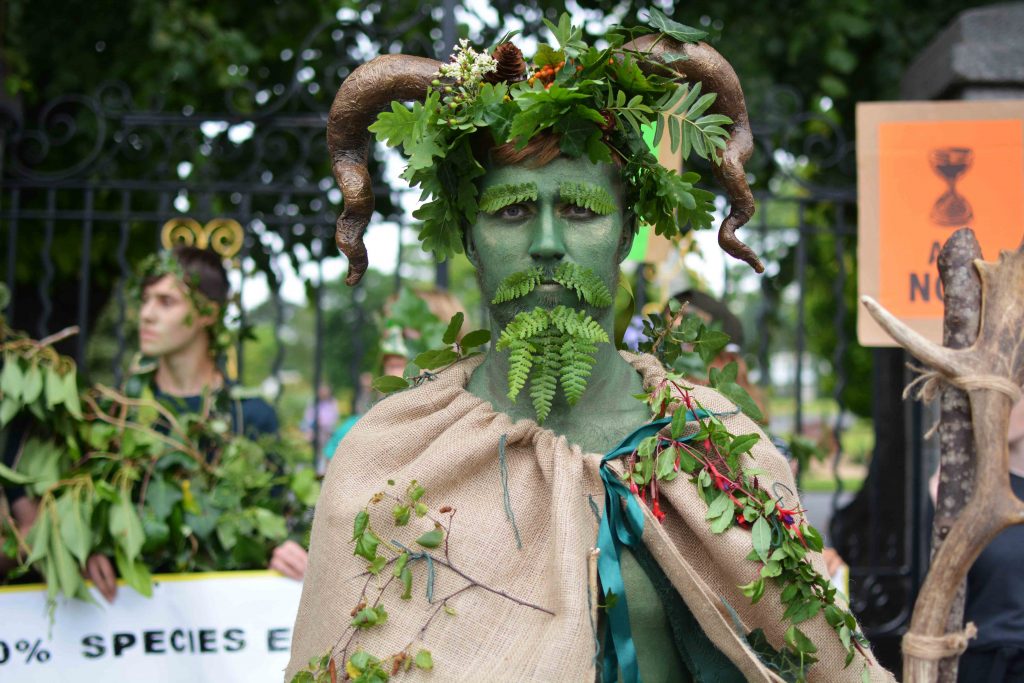Forestry sector must engage with local to avoid fate of wind industry

July 8th, 2019
It is vital that the Government and forestry industry engage with local communities over plans to ramp up tree planting in order to avoid a similar fate as the wind industry, a UCD climate expert has said.
Speaking at a Forest Industries Ireland (FII) event in the National Botanic Gardens in Co Dublin this morning, Dr Cara Augustenborg said that recent backlash to the industry reminded her of the resistance to the wind industry seen across Ireland in recent years.
Dr Augustenborg, a policy fellow at UCD, said that the wind industry likely regrets not engaging with locals who opposed wind projects that led to the issue becoming a “political hot potato that people didn’t want to touch”.
Several local campaign groups have emerged recently in opposition to the conifer plantation model that dominates the Irish forestry industry, such as the prominent Save Leitrim campaign.
Leitrim has the highest forest cover in the country as a percentage of the total county land area. Over 19,000 hectares of forestry in the county – 70 per cent of forest cover – is conifer plantation.
This model, the local group says, is having a “very serious negative impact on people, their lives, mental health, businesses, communities, biodiversity, wildlife and their rights”.
According to the group, almost 150 townlands in the county have essentially been abandoned with many of them fully planted in conifers,
Dr Augustenborg said the public understands the need for more planting but that they also require evidence that the proposed forestry model will reduce emissions.
“We need to provide the evidence that this tree planted in this soil for this product will be managed properly so that it will be carbon neutral… but I don’t think that evidence is there yet,” she added.
Dr Augustenborg said that there are genuine concerns over the impacts of the monoculture conifer model on wildlife and the environment, adding that clearfelling also impacts on the aesthetics and recreational value of forestry for locals.
She warned that a monoculture model is “more susceptible to climate stresses”, disease and pests such as the Sitka bark beetle that is currently found in the UK.
She also said that she is worried that dismissing the views of activists such as the Extinction Rebellion (XR) members who earlier interrupted the event “would slow down the transition” to higher tree planting in Ireland.
She said that both the State and industry should actively engage with the views of the likes of XR and local groups or face the risk of slowing down the sector due to public resistance to planting.

Forestry ‘naysayers’
The chairman of FII Brian Murphy said, however, that concerns raised over the conifer-plantation led Irish forestry model are misinformed and uneducated.
Speaking earlier at the event, Brian Murphy said that people posting messages on social media with headings such as “sikta wars” and “sitka desserts”are presenting “perceived truths that are only fiction”.
Mr Murphy said that “beauty is the eye of the beholder” when it comes to forestry, adding that Sitka plantations are full of wildlife while also acting as “our number one practical weapon” in tackling climate change.
He said that the sector is “waking up now to the need to tell our story” and the need to “try and work better with our local communities for the future”.
The Minister of State for Forestry Andrew Doyle TD said that there “we do have naysayers” in this country but “not just about conifers, but against trees in general”.
He said that Irish people need to develop a “more open minded approach around what trees can do” in terms of both biodiversity and climate benefits and the commercial roles in the construction and energy production.
He said that it was particularly vital to persuade farmers and landowners to plant trees on parcels of their land as we face “significant challenges” to reach a State target of planting 8,000 hectares per annum.
COFORD recently found that we need to plant a minimum of 15,000ha per year up to 2030 to sustain our forest estate’s climate change benefits, among other uses in energy and construction.
New research published in the journal Science suggests that the restoration of forested land at a global scale could help capture atmospheric carbon and mitigate climate change.
Pádraic Fogarty of the Irish Wildlife Trust said that the new research makes it “blindingly obvious that we need a programme to bring trees back to our landscapes on a vast scale”.
However, he said, planting monoculture plantations of conifers “willy-nilly is not the solution and will only add to problems”.
“We need a combination of approaches, based on native trees and ecological processes, to grow more trees in towns, cities and on farms,” he added.
“We can have a commercial timber sector based on close-to-nature techniques and ‘continuous cover’. We should give more community say in the development of these woodlands to foster ownership and stewardship.”
[x_author title=”About the Author”]







